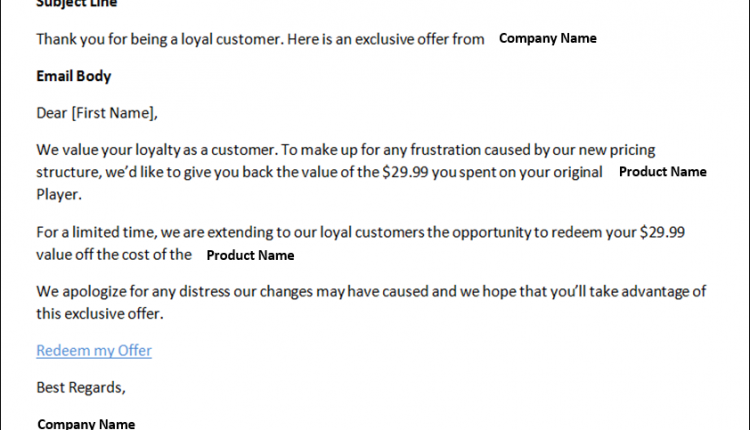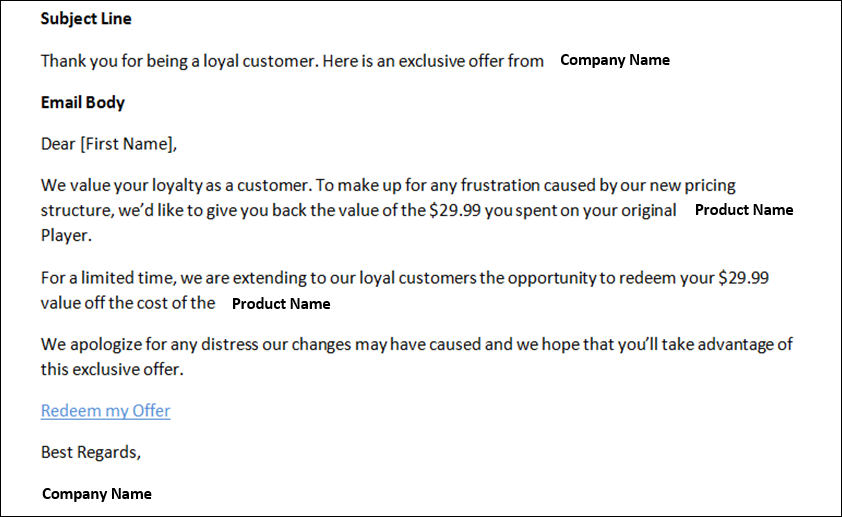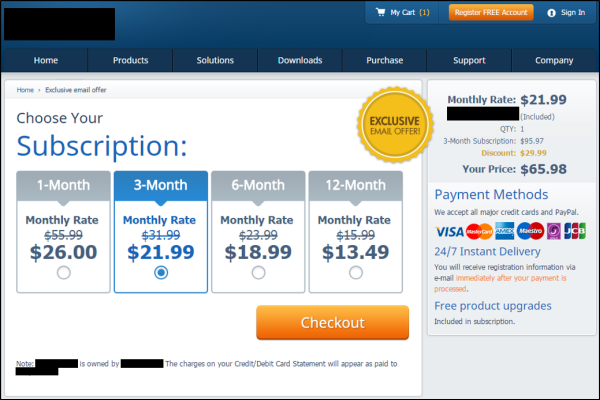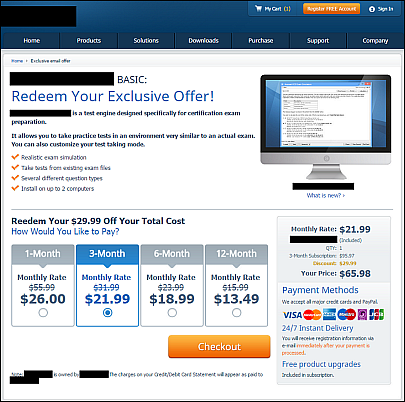“The conversion sequence is actually a function of understanding the offer. We are not optimizing the product, we are optimizing the offer. As such, we are focused on two aspects: the content and the presentation.” — Flint McGlaughlin, On Improving the Conversion Sequence
The goal for most marketers is conversion. Often other metrics, like open rate and clickthrough, are tossed by the wayside for the “all-powerful” conversion.
I recently came across a test in the MECLABS research library that spoke to the idea of optimizing an offer through content and presentation. It also lent itself to the other side of metrics — elements such as conversion.
This company (which has been anonymized) offers a testing software for certification exam preparation in the form of a subscription model. For this test, an email was sent out to their customers apologizing for a new, somewhat confusing, pricing structure.
Once the link was clicked, customers were brought to a landing page which had different subscription models to choose from. Here is what the control looked like:
I have placed black boxes over the logo and product names so the company is protected, but you can still get a sense of what the page looked like. There is subscription model pricing laid out in the main eye path with payment functionality on the right side column.
Next let’s take a look at the treatment:
The treatment first displays this as an “exclusive offer” in the headline — not as a badge or seal. Next, the subheadings introduce the product and some of its benefits. A bulleted list with four points of value for the product then shows the value in a way that is able to be read quickly by customers.
Admittedly, nothing seems too groundbreaking in this blog post so far. The treatment adds points of value around the product, which should be beneficial to any desired metric.
Let’s take a step back and imagine that we were the customer deciding if we wanted to subscribe to this testing simulation software. Some of the questions I would ask as a customer are now answered in these additions to the treatment.
- Is this software designed specifically for the tests I am taking?
- How realistic or accurate are the practice tests?
- Is there a large variety of question types?
- Can I use this software on more than one machine?
Now that I know that the answer to all of these questions would be a “yes,” I would probably be more inclined to purchase this product. In my opinion, the fact that I can use it on two machines is a huge point of value. Compared to the control’s messaging, I am essentially getting extra copy at no additional cost.
Before we look at the results, this is a good time to revisit Flint McGlaughlin’s observation: “The conversion sequence is actually a function of understanding the offer. We are not optimizing the product, we are optimizing the offer. As such, we are focused on two aspects: the content and the presentation.”
The product is the same in both the control and treatment. After taking a closer look, however, notice how much more appealing the product seems in the treatment. Indeed, the offer (not the product) has been optimized.
Without further ado, here are the results of the test:
Surprised? So was I.
When I initially saw this test, I thought, “Well here is a classic shoo-in value proposition test.” Sure enough, like with most tests, the results were not black and white.
I did a little more digging in the test data and found something interesting:
The treatment, although it did not convince any extra people to purchase the product, communicated enough value about the product that it propelled the customers who were interested to purchase more.
Keep in mind when testing that conversions are simply the amount of people who completed a desired action. If that is indeed the macro goal, then fair enough. In most cases, when there are other goals or metrics to consider, conversions are not always the highest priority.
You may ask yourself, “Then what is?” I would argue that the highest priority is, to once again quote Flint McGlaughlin, to “optimize the offer” and that we should be “focused on two aspects: the content and the presentation.”
Top Takeaways:
- We are not optimizing the product but the offer.
- Focus on the content and the presentation.
- Consider all metrics for a potential learning, not just conversions.
You might also like
On Improving the Conversion Sequence, Flint McGlaughlin
How to Recover from Failed A/B Testing [More from the blogs]
Search Engine Marketing Optimization: How simultaneous testing increased PPC clickthrough 427% for an ecommerce company [Video] [MarketingSherpa video replay]
Web Optimization: VacationRoost implements 2 testing methodologies to boost total conversion rates by 12% [MarketingSherpa case study]
Why Implementing Relevancy into Email Programs Can’t Wait [More from the blogs]








